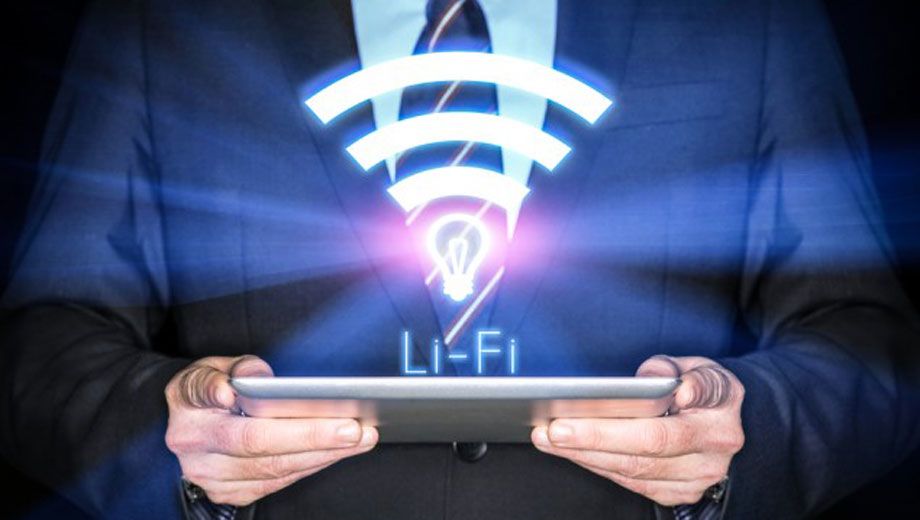You usually wouldn’t associate aircraft with fast Internet speeds. Flights which are equipped with sky-high WiFi, especially via satellite, rarely deliver what you’d think of as ‘broadband’.
But back on the ground, Airbus is helping one tech startup to literally deliver data at the speed of light.
The technology is called LiFi, and as the name suggests, it uses light rather than wireless radio waves to send data to your laptop, tablet or smartphone.
Recent trials have seen data rates as high as 1Gbps, which is not just 100 times faster than current Wi-Fi technology but probably 1,000 times quicker than the average home Internet connection.
As if that’s not enough, “in the future we could go to 100Gbps” predicts Deepak Solanki, CEO of Velmenni – one of the companies being supported by Airbus’ BizLab innovation accelerator hubs.
Let there be light
LiFi uses LED lighting as its medium, blinking the lights on and off (to represent the digital language of ones and zeros) at a rate of one nanosecond, “so fast that human eyes cannot detect it” Solanki explains.
Advantages over WiFi are not just about speed: there’s no risk of interference to or from other wireless systems and equipment, and it’s inherently secure because if you can’t see the LiFi bulb you can’t tap into its data stream.
Solanki and his team have been working with Airbus on ways that LiFi could be used in aircraft, which begs the question: how do you connect over light when the cabin lights are turned off during an overnight flight?
“For aircraft we don’t use visible light, we use an invisible part of the spectrum, near infrared spectrum” Solanki told Australian Business Traveller during the annual Airbus Innovation Days event held last week in Hamburg.
“We have LiFi access points throughout the cabin and they connect to the (personal) screens in the aircraft.”
LiFi in flight
This is a key reason Airbus is so interested in LiFi: it would allow them to remove the looms of wiring connecting each passenger’s screens to the digital content server containing all the movies, TV shows and music you enjoy during a flight.
That wiring not only adds cost and complexity to aircraft, it adds weight which in turn lessens fuel efficiency. Not much, but in the world of aircraft design, every little bit helps.
Solanki is also working on a LiFi-compatible USB stick which you can plug into your laptop or tablet – and although the prototype would barely fit into your pocket, the tendency of technology is always to shrink, not grow.
“For smartphones, we are hoping that in future we can get access to their light sensor and make it compatible with LiFi” Solanki says.
BizLab boost
His company Velmenni has been working on LiFi “for almost three years” and signed up to the Airbus BizLab scheme in January 2016 under its six-month acceleration program.
Airbus doesn’t invest money into projects – there’s more than enough of that out there in VC-land – but provides access to coaches, experts and mentors in areas such as technology, legal, finance, marketing and communications.
“BizLab has given us the opportunity to get to know how things work within aviation and learn a lot of technical information so we can make our technology compatible with the systems, it’s really about opening doors” Solanki says.
Velmenni expects to have its first commercially available LiFi system “within a year”, but Li-Fi isn’t expected to completely replace Wi-Fi – it could more likely exist in parallel to create more efficient networks.
But the goal is to see LED smart bulbs – already slowly growing in popularity – themselves become LiFi compatible to create light-powered networks around the office, in hotels and conference rooms, and at home.
“All we need to do is fit a small microchip to every potential illumination device and this would then combine two basic functionalities: illumination and wireless data transmission,” the inventor of Li-Fi, Professor Harald Haas from the University of Edinburgh, said during a TED talk.
"In the future we will not only have 14 billion light bulbs, we may have 14 billion Li-Fis deployed worldwide for a cleaner, greener and even brighter future."
David Flynn travelled to Hamburg as a guest of Airbus.
Follow Australian Business Traveller on Twitter: we're @AusBT




Virgin Australia - Velocity Rewards
13 Jan 2014
Total posts 122
Radio waves travel at the speed of light...
Qantas - Qantas Frequent Flyer
26 May 2014
Total posts 465
WiFi carrier frequency is mostly 2.4 GHz. Near Infrared light has a frequency of around 400 THz (400,000 GHz).
LiFi may be beneficial in data distribution on an aircraft with 300 users, but in terms of Internet bandwidth wouldn't the current limitation be the satellite link ?
Qantas - Qantas Frequent Flyer
16 Mar 2015
Total posts 4
Also LiFi needs line of sight to work? Agree with GregXL, this appears to be just for a faster network inside the aircraft for streaming inflight entertainment rather than for faster Internet access to the world outside.
Qantas - Qantas Frequent Flyer
21 Aug 2014
Total posts 503
Let's hope it's as good as they claim to be!
QF
04 Apr 2014
Total posts 209
"probably 1,000 times quicker than the average home Internet connection" - maybe in Australia!
Hi Guest, join in the discussion on Airbus wants to upgrade WiFi to the speed of light